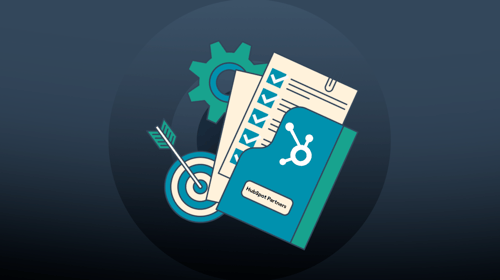Our CSO, Daryn Smith, commonly speaks about company culture and how many companies leave it to chance. This results in failure to encourage a positive attitude and behaviour in the workplace, and disconnects the team from the company’s public brand values and promises. One part of building a great company culture is by implementing a well-thought-out system of company perks, and at Huble Digital we rely on a constantly evolving program to keep our culture thriving.
Once every two months, Huble Digital SA take a Friday afternoon off as a company to play. These “Fun Fridays” cater for a range of tastes and personalities on a rotating basis. Just this year, we’ve been on a cruise (dressed as pirates!) and played mini-golf (in a cave) during working hours. We’re literally paid to play. #winning!

Even though it's often difficult to take that time off when you really need to work, each adventure gives us an opportunity to value our team in different ways and learn new things that we then apply back at the office. Compt, a perk-management software, explains there are three types of perks: programmatic, purchasable, and environmental.
Perks or Benefits?
It’s true, perks are not the same as benefits, which cover an individual’s basic needs as part of a salary package. Start-ups often can’t afford to offer benefits, but a well-thought-out system of perks can be implemented into the business culture from early on. This helps you build towards the kind of success that enable benefits such as company-funded retirement plans and medical insurance. Perks help you do your job better.
Programmatic perks are policy-driven advantages to working at your company. At Huble Digital that means we’re encouraged to work remotely at least once per week, can work flexible hours if we’re responsible about it, and are opening discussions on being a pet-friendly workplace. The last one was only discussed informally (once) in the kitchen over lunch, but the point is that we have the freedom to shape the workplace around us by trying new things that may help us work better as a team, or productively as individuals. And they don’t all have to stick: we tried a season of weekly office yoga that we had to cancel because enrollments weren’t high enough to make the programme a viable company investment. Maybe yoga will come back, and we’ll get an aquarium, or maybe not. At least we’re experimenting!
Functions overlap, but purchasable perks are things that are more closely related to money (and helping your employees save it). Think daily fruit, having purified water and freshly ground coffee available 24/7 and the convenience of having a visiting hairstylist that pops in to keep you groomed (even if everyone pays for their own cut). These perks save us the time and inconvenience of regular essentials for effective teamwork as marketing technologists — we’re groomed for any client-facing work, and fed and “watered” to support making meaningful contributions to the daily grind.
Environmental perks are what happens to you when you find yourself in an office that makes working “as easy as pie”. A great office layout with better-than-fluorescent lighting, standing desk options, an inspiring colour palette, office plants, chill-zones and multiple types of breakaway workspaces — these are just a few of them. If you think about it, environmental perks are what happen when you curate your work space for maximum productivity and to boost staff retention, but that is a blog for another time.
How Do You Know It’s Not Window Dressing?
Perks don’t singlehandedly make a culture, but they can deliver substantial returns when you’re hoping to build one. They help make the company mission tangible and of benefit to employees first, so that it can be paid forward to clients through work delivered. Here are some thoughts:
- Perks such as flexible schedules and remote working demonstrates that you trust your team to be… well, responsible adults. There’s nothing that sets up a petty highschool dynamic and resentment like checking up on each other and micromanaging a schedule. By focussing on deliverables and trusting that your team will be available to each other when needed, they’re happier to get the job done (and go over and above the call of duty). Not only do they reap the benefits of remote work, they also do so feeling respected.
- Training is a perk too! Especially when it happens in fun ways. The Huble Digital team stays motivated by the chance to join the directors at the annual Inbound conference, held in the United States. And because we’re nominating our peers, it’s a great way to reflect on how privileged we are to be a team.
- A well curated “perk portfolio” is a way the company makes its mission tangible and it’s employees it’s first beneficiaries. It emphasizes the company culture, which is especially important for integrating and retaining new hires. And it’s more than just a fear-based attempt at keeping the team together — it works because a coherent culture, clearly demonstrated through perks and benefits, makes us a better team.
It’s no surprise a PWC study found that perks such as remote work days, recognition (such as trips to Inbound!) and flexible schedules have a significant impact on employee satisfaction and retention rates. It tells the team you value and trust them as professionals.
Now you’re convinced, let’s talk about the downside...
The brightest lights cast the darkest shadow. Here are some of the challenges of managing a perks portfolio:
- They’re increasingly expensive. Solution: Set aside a budget for it, and be open to fundraising.
- It takes a lot of time and effort to manage. Solution: Establish a Staff Experience Committee to roll-out an annual curriculum that’s reviewed every quarter and sensitive to staff feedback. Better yet, get them to handle the budget too!
- One-size-fits-all programmes suits no one.
Solution: Rotate between events suited to introverts vs extroverts, sports vs cultural, inside vs outside, boozy vs sober etc.
- They don’t solve for remote employees.Solution: Consider that the ability to work remotely may be enough of a perk in itself to keep your remote team happy. Ask them! And be open to dropping them the odd gift card, or token of appreciation easily delivered digitally.
Top tip…
Experiences make lasting impressions and build good teams, so combine product-based perks with an adventure to get the best return on your investment. It also lays the perfect foundation for glowing, sincere word-of-mouth advertising — as happy employees can’t help but share their latest adventure story.
With a bonded team and a great environment you’ll be set to attract and retain top talent. It’s more important than any amount of perks, but a well thought out perks portfolio can work to create that winning team and shape that office environment. So think about it as more than a gimmick — it’s a team building exercise!
To work with marketing technologists that keep polishing their teamwork skills (with the help of perks), Huble Digital and see just how well a great team affects your results.










-3.png?width=500&height=320&name=Matt%20-%20imagery%20bank%20(8)-3.png)

